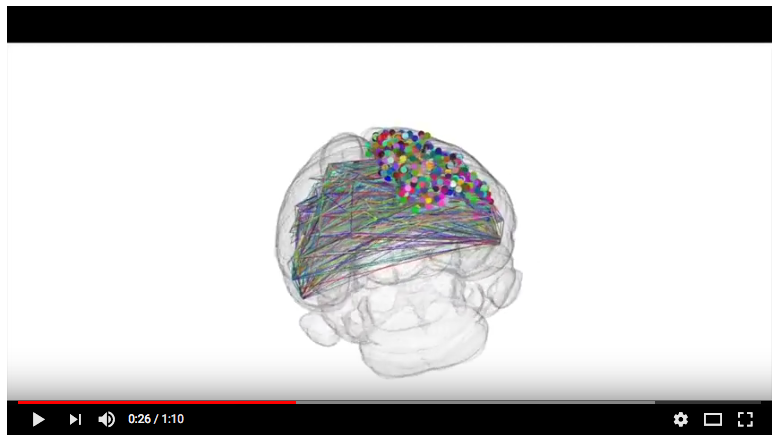Barcoded Neurons - A Revolutionary Brain-mapping Technique
COLD SPRING HARBOR, N.Y., -- Using a revolutionary new brain-mapping technology recently developed at Cold Spring Harbor Laboratory (CSHL), an international team of scientists led by Professor Anthony Zador has made a discovery that will force neuroscientists to rethink how areas of the cortex communicate with one another.
The new technology, called MAPseq, allowed the scientists to determine that neurons in the primary visual cortex communicate with higher visual areas of the cortex much more broadly than previously believed, and according to specific patterns.
The wiring diagram of the cortex determines how information is processed across dozens of cortical areas. "If we don't know how information is combined even at the earliest stages, then we have essentially no shot of figuring out how the brain works." says Justus Kebschull, now a postdoctoral researcher at Stanford University who was instrumental in developing MAPseq as a graduate student in Zador's lab.
In a MAPseq experiment, hundreds or thousands of neurons are labeled uniquely with random RNA sequences ("barcodes") via a single injection made in the brain. The barcodes are transported into the branching axons of each labeled neuron, where they can later be read out by high-throughput barcode sequencing after the brain is dissected. This process allows researchers to identify every brain area that each barcoded neuron makes contact with.
The Zador lab has begun utilizing MAPseq to compare the brains of a mouse autism model with healthy mouse brains to see if mis-wiring occurs during development at the single-neuron level that might explain the disorder's symptoms – just one of many potential applications of the method.
In the experiments, the team first verified the relatively new technology by comparing its results with the gold-standard mapping method, called single-neuron tracing. They used the latter method to trace 31 mouse neurons in the primary visual cortex to up to seven different cortical locations. These experiments took 3 years to complete. It then took them only 3 weeks to use MAPseq to map the projections within the cortex arising from 591 primary visual cortex neurons.
"Our finding signals a shift away from the rather convenient idea of every neuron projecting to just one cortical area," says Kebschull. "That thinking ignores the underlying structure of the brain, and in the future, the way people do their experiments is going to change drastically."
Funding: U.S. National Institutes of Health; Brain Research Foundation; IARPA (MICrONS); Simons Foundation; Paul Allen Distinguished Investigator Award; Boehringer Ingelheim Fonds; Genentech Foundation; European Research Council; Swiss National Science Foundation.
About Cold Spring Harbor Laboratory
Founded in 1890, Cold Spring Harbor Laboratory has shaped contemporary biomedical research and education with programs in cancer, neuroscience, plant biology and quantitative biology. Home to eight Nobel Prize winners, the private, not-for-profit Laboratory employs 1,100 people including 600 scientists, students and technicians. For more information, visit www.cshl.edu.
More barcode/healthcare articles of interest at Barcode.com:

